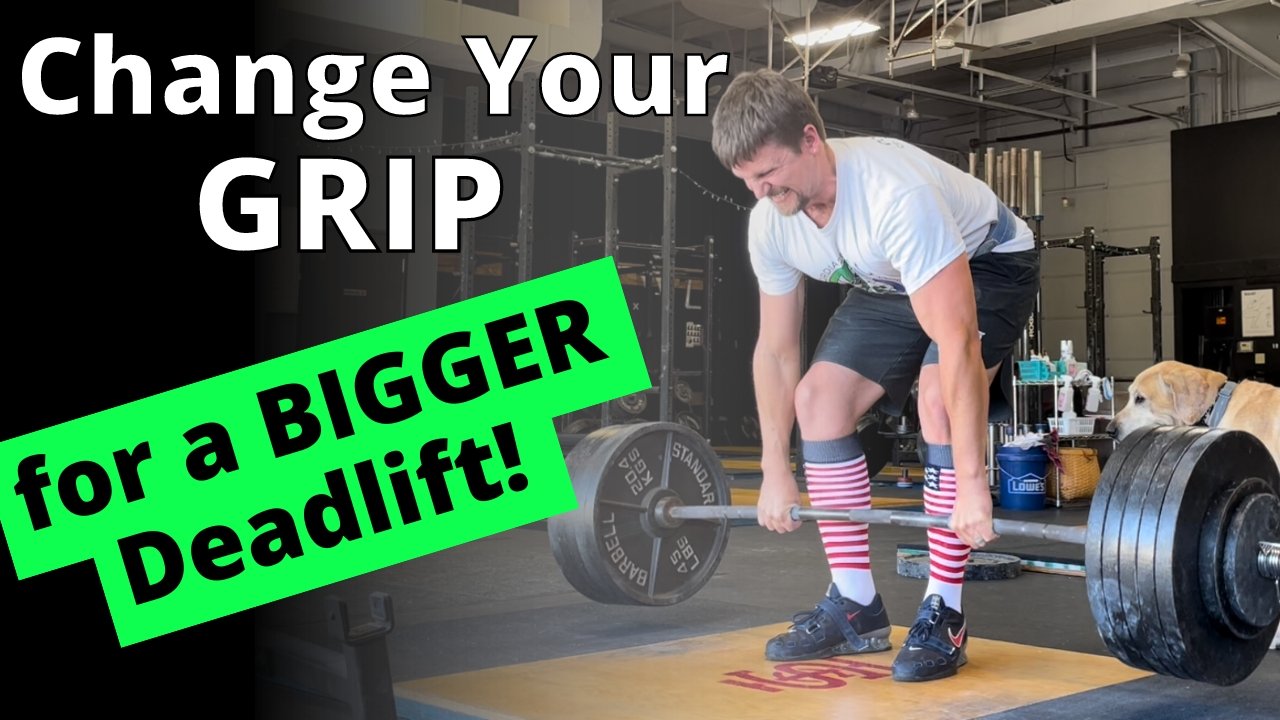STOP Making This Deadlift Mistake With Your Legs!
/Are you “kicking” the bar away from you with your shins when you deadlift? It’s killing your pulls, so knock it off. Let’s fix it real quick-like.
There are a number of reasons a deadlift can swing away from you, and we’re going to discuss one of them today: the error of accidentally pushing the bar away from you with your shins (i.e., “kicking” the bar with your shins) during the setup process. Two versions of this error are quite common, so let’s address them both, and this is explained and demonstrated in the included video as well.
Version #1: Bringing Your Shins to the Bar Too Aggressively
This error occurs during step 3 of the 5-step deadlift setup process. You can watch the included How to Start Lifting: Learn to Deadlift video for a more in-depth treatment of this setup process, but the quick version is as follows:
Step 1: Stance - narrow with shins 1” from the bar
Step 2: Bend at the hips to take your grip
Step 3: Bend your knees to touch your shins to the bar
Step 4: Squeeze your chest up to set your back
Step 5: Pull - drag the bar up your legs
If you bring your shins aggressively and quickly to the bar during step 3, you may inadvertently kick the bar away from you (i.e., it will roll forward a bit).
To solve this problem, simply use the cue “shins to the bar softly” or “shins lightly to the bar.” The idea is to bend your knees just enough to bring your shins in contact with the bar - and no more than that. Next, squeeze your chest up (step 4), and then pull (step 5).
Version #2: Dropping Your Hips When You Set Your Back
This error occurs during step 4 of the setup process - the “squeeze your chest up to set your back” step. If you set your back aggressively (and by the way, good for you if you do!), you might accidentally drop your hips, which causes your shins to move further forward, which causes the bar to get pushed forward.
It’s worth noting that this can be fixed after the fact; you simply raise your hips back up a bit and roll the bar back to its original location, but we’ve now added more variables and steps to our setup process, and it’s better not to make this mistake in the first place. What to do?
When squeezing your chest up to set your back in rigid extension, use the cue “chest up AND hips up.” Of course, you’re not actually trying to raise your hips - you’re just using the “hips up” part of the cue to make sure the hips stay in place and don’t move downward. We use this cue quite regularly, and it has worked wonders for a number of lifters.
As always, we hope this helps you get stronger and live better.
(Some links may be affiliate links. As an Amazon Associate, Testify earns from qualifying purchases.)












